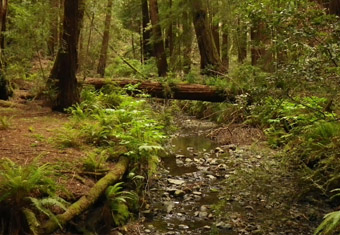

Abstract
Water withdrawals and droughts pose serious threats to stream biodiversity in arid and semi-arid regions across the world. Although many species in these regions have adaptations allowing them to persist through drought, the limits of these adaptations will be tested by increased societal demands for freshwater and intensifying droughts predicted by climate models. Despite these looming changes, ecologists still know relatively little about aquatic communities in intermittent streams (which cease flowing during some portion of the year). These knowledge gaps are hampering our ability to design, implement, and evaluate innovative water conservation projects, like the Pine Gulch Watershed Enhancement Project in California. Here, farmers and conservationists are working side-by-side to conserve winter rainfall and stream flow in off-channel ponds in order to enhance summer dry season flow, but they lack critical hydrological and ecological data to guide successful project implementation.
In my research, I will address these knowledge gaps by quantifying (1) flow regime attributes across a diversity of stream sizes from intermittent headwater tributaries to mainstem perennial streams, (2) the effect of flow intermittency and dry season habitat contraction on aquatic biodiversity and community composition, and (3) the effect of habitat contraction on fish distribution and dry season survival. In tackling these questions, I will use an interdisciplinary approach blending multiple types of hydro-ecological data and modeling efforts. These models will immediately be used to assess the efficacy of the Pine Gulch Watershed Enhancement Project, and will also be essential to scaling up the Project’s approach for use on a regional scale. Finally, my research will provide a framework for assessing the importance of intermittent streams to regional salmonid fish stocks, which could be a major step towards ensuring the protection of intermittent streams under the Clean Water Act.
